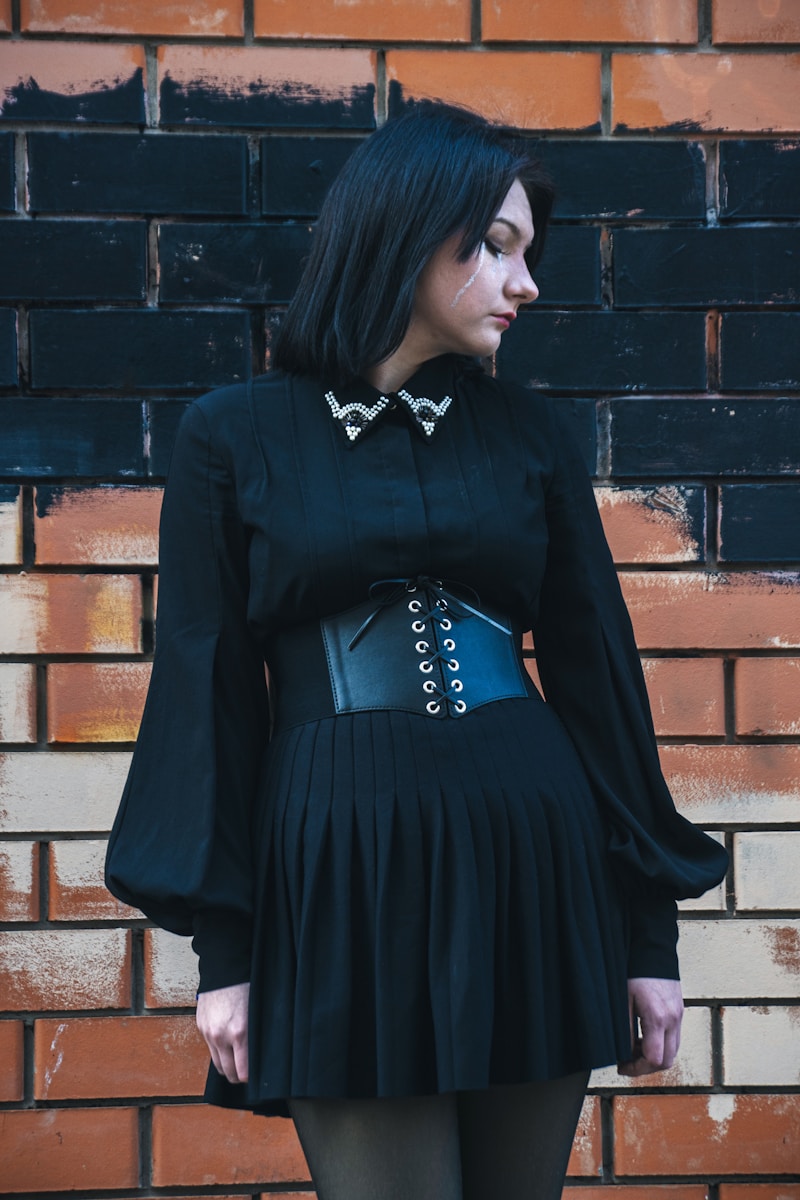Every wardrobe tells a story, and within nearly every modern closet hangs a garment that has transcended time, class, and culture: the little black dress. Affectionately referred to as the LBD, this singular piece of fashion has become a symbol of style, simplicity, and subtle rebellion. But how did a simple black dress evolve from mourning attire to a cultural icon?
The journey of the little black dress (LBD) is not merely one of fabric and fashion—it’s the story of changing social attitudes, the democratization of style, and the female voice asserting itself through form. The LBD has survived nearly a century of trends, adapting and reinventing itself with each era. From Coco Chanel’s revolutionary design in the 1920s to today’s diverse expressions of identity and elegance, the LBD continues to reflect the evolving narrative of women.
1920s: The Birth of a Revolution
When Coco Chanel introduced a simple, calf-length black dress in a 1926 issue of Vogue, she likely had no idea she was rewriting fashion history. At the time, black was reserved for mourning and formal wear—never for everyday elegance. But Chanel, ever the disruptor, envisioned a dress that freed women from corsets and fussy embellishments, one that was minimalist yet profoundly chic.
Vogue dubbed it “Chanel’s Ford,” comparing its simplicity and accessibility to the Model T car. The message was clear: this was a uniform for the modern woman, not confined by class or convention. In Chanel’s hands, black was no longer somber—it was smart, sleek, and stylish.
1930s-40s: Hollywood Glamour and War-Time Practicality
The 1930s saw the little black dress step onto the silver screen. Film stars like Greta Garbo and Marlene Dietrich wore sultry black numbers that added mystery and allure to their personas. Hollywood elevated the LBD from a practical staple to a symbol of old-world glamour. Bias cuts, luxurious fabrics, and dramatic silhouettes dominated the look.
But as the world plunged into war in the 1940s, practicality took center stage. With fabric rationing in full force, the LBD became a pragmatic choice again. Its simplicity and versatility made it a go-to for women entering the workforce or managing households. It could be dressed up or down, worn day or night—an economic yet elegant option in a world on edge.
1950s: Dior’s Hourglass and Audrey’s Elegance
Post-war optimism brought a return to femininity. Christian Dior’s “New Look,” launched in 1947, emphasized nipped waists and full skirts, reshaping the LBD into a more romantic silhouette. Black cocktail dresses became the norm at evening events, their curves echoing the hourglass ideal of the time.
Then came Audrey Hepburn. In 1961’s Breakfast at Tiffany’s, she emerged in that now-iconic Givenchy black dress, oversized sunglasses, pearls, and a coffee cup in hand. That moment—equal parts elegance and enigma—solidified the LBD’s place in the fashion canon. Hepburn’s dress was not just clothing; it was character, grace, and independence wrapped in black silk.
1960s-70s: Mod, Minimalism, and Feminist Edge
The LBD didn’t just survive the swinging sixties—it thrived. Designers like Mary Quant shortened hemlines, and the mod movement introduced bold, geometric cuts. The little black dress was now shorter, sleeker, and more playful. It flirted with rebellion, reflecting the era’s youthful energy.
In the 1970s, fashion splintered into a variety of subcultures. As second-wave feminism gained traction, the LBD also became a symbol of freedom. It was less about seduction and more about self-expression. Designers like Halston embraced minimalism and drapery, while others used the LBD as a blank slate for cultural and political statements.
1980s: Power Dressing and the LBD Goes Bold
The 1980s were not known for subtlety, and the LBD followed suit. Power suits, padded shoulders, and bodycon silhouettes reflected a new kind of woman: career-focused, assertive, and unapologetically bold. The little black dress took on sharper tailoring, often paired with statement accessories and fierce heels.
Designers like Azzedine Alaïa and Thierry Mugler sculpted dresses that were daring and sensual. The LBD became armor—sexy, strong, and utterly commanding. No longer was black simply elegant; now it was a force.
1990s: Minimalism Reborn and the Rise of the Anti-Dress
As the world turned toward grunge, the LBD found itself caught between extremes. Minimalism came back with a vengeance—Calvin Klein’s slip dresses, Kate Moss in barely-there spaghetti straps, and Carolyn Bessette-Kennedy’s simple sheath all reflected a desire for pared-down, effortless cool.
Simultaneously, the LBD became subversive. Think Courtney Love’s babydoll dresses paired with combat boots, or Madonna’s lingerie-inspired looks. The dress didn’t have to be polished to be powerful. It could be edgy, ironic, and raw.
2000s–2010s: Red Carpet Reinvention and Fast Fashion
The new millennium ushered in red carpet culture. Celebrities like Angelina Jolie, Rihanna, and Charlize Theron reinvented the LBD at award shows, each wearing versions that ranged from classic to avant-garde. Designers pushed the boundaries with asymmetrical cuts, mesh inserts, and unexpected materials.
At the same time, fast fashion brands democratized the LBD. Suddenly, it was everywhere—from Zara to H&M to Target—available to all at a fraction of the cost. While this broadened access, it also raised concerns about sustainability and the loss of the craftsmanship that once defined the dress.
2020s: The Modern LBD—Diverse, Inclusive, Sustainable
Today’s little black dress is more inclusive and intentional than ever before. It embraces all body types, genders, and identities. The LBD can be modest or daring, oversized or body-hugging, casual or couture.
Sustainability has become a key focus. Ethical brands now create eco-conscious LBDs using organic cotton, recycled fabrics, and low-waste production. Rentable fashion and vintage revival have also made the LBD a tool of circular style—a nod to the past with a commitment to the future.
Moreover, the digital age has given rise to the “Instagram outfit,” yet the LBD remains timeless. It doesn’t chase trends—it transcends them. In a world of loud statements, the little black dress whispers confidence.
Why the Little Black Dress Still Matters
The LBD has always been more than just a dress. It’s a canvas, a constant, a symbol of self-assurance. Its power lies not in its flashiness, but in its ability to shape-shift while staying inherently itself.
At a time when fashion is more expressive and less prescriptive than ever, the LBD remains a grounding force—a garment that evolves with us, yet never tries too hard. It can be high fashion or thrifted treasure, vintage glamour or modern minimalism.
In many ways, the little black dress mirrors the women who wear it: resilient, adaptable, and endlessly expressive. It has been worn in rebellion, in mourning, in celebration, in protest, and in joy. It has held space for femininity in all its forms—soft, sharp, and everything in between.
Final Thoughts: The LBD as a Legacy
Few fashion items have endured with the quiet confidence of the little black dress. It has witnessed a century of change, been both icon and underdog, and still hangs proudly in closets worldwide.
As fashion continues to evolve, one thing is certain: the little black dress will keep changing, just like the women who define it. And in that evolution lies its eternal charm.


